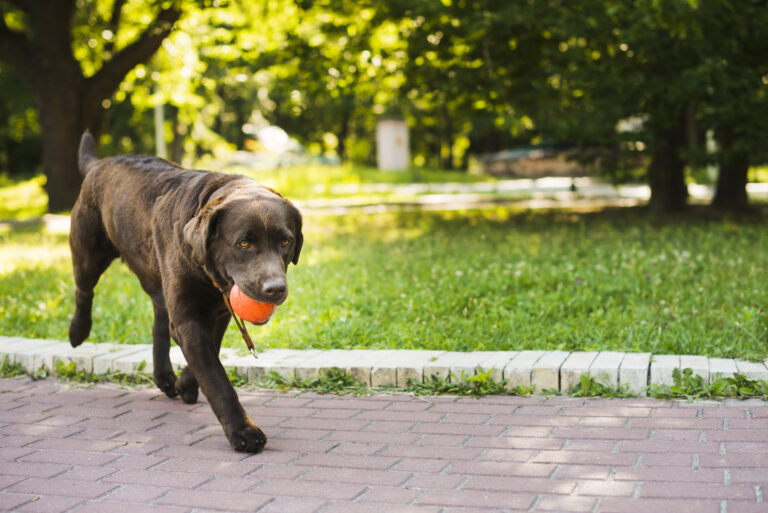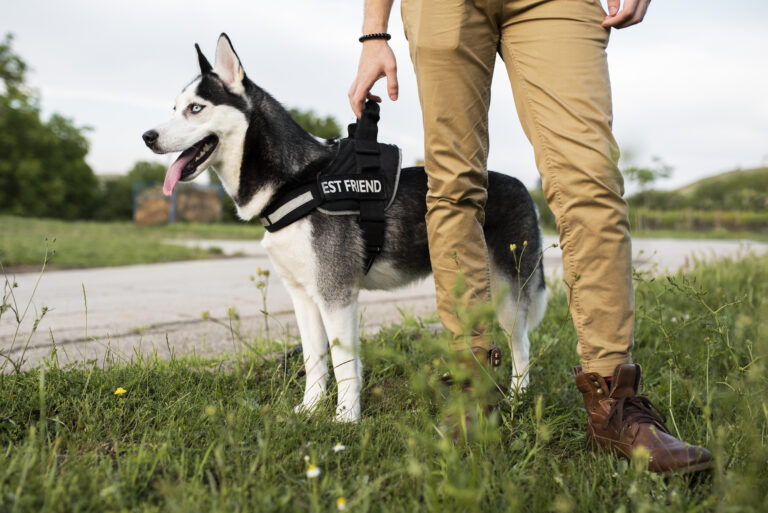Importance of Verbal and Visual Cues In Dog Training
At our dog training program in Northern Virginia, we stress the importance of verbal and visual cues in training our dogs. Dogs learn mostly through verbal cues, visual cues, vocal tones, repetition, correction, and praise (just like us humans).
First, we will discuss keeping your commands simplistic! In the Marine Corps, we used the acronym, “KISS” (Keep It Simple Stupid). I always stress to our clients that their verbal and visual cues should be as easy as possible, often times one syllable. Many times clients come to our dog training facility in Northern Virginia and their dogs have learned through commands such as come here, get down, sit down, lie down, get off the couch, etc.
If you look through our list of verbal and visual cues on our Off-Leash K9 Training website, you will see all of our commands are very basic and cut/dry: come, sit, down, heel, off, place, touch, through, off, etc. I tell people to look at it the same way you teach a baby or an infant, you use the most basic language possible to get the job accomplished.
Second, the “tone” of your commands. On a daily basis at our dog training facility in Northern Virginia, I have to correct owners for yelling at the dogs. As I say, “If you watch our 400+ videos on our YouTube Channel, you will never hear us raise our voice.” By raising your voice loudly, the dog (like people) often times interprets this as punishment or consequence which can stress your dog out. By stressing them out and getting them worked up, you are less likely to get the desired behavior. When we release the dogs with our “break” command, we get a high pitched and excited voice, allowing the dogs to learn to associate the word “break” with something fun and positive. However, you will never see us yell or scold the dogs.
Third is incorporating in the visual cue. Many people ask us if we can also train their dogs with visual or hand-and-arm signals. Many do not realize, this is not something you necessarily “train” the dogs for, this is something that you incorporate in and they do automatically.
Dogs are master of association, meaning, they quickly learn to associate an action with an outcome. For instance, if every time you say the word “down,” you always point to the ground, your dog will quickly and automatically learn to associate the hand signal with going into the down position. If every time you point to an object and then say “place,” your dog will quickly learn that when you point to something using the same gesture, that you want him/her to jump up and sit on that object.
An important thing to point out is ensure that your hand signals for each command is distinctly different. Meaning, ensure what you do for sit looks completely different than the hand signal you do for down. If the hand signals look similar, you could find that this could confuse your dog as to what you want him/her to do.
Personally, with over 5000+ dogs experience, I have learned that a well trained dog who was trained utilizing verbal and visual cues will generally pick the visual command over the verbal command. Meaning, if you point (as if pointing for the down command), but you say “sit,” generally the dogs will down. This shows me that to the majority of dogs, the visual command is more strong to than the verbal command.
In summary, use simple verbal commands, incorporate distinct visual cues for each command, and watch your tone.
At our dog training facility in Northern Virginia: www.offleashk9training.com you can see many videos where you see all of these factors coming into play.
www.offleashk9training.com
Facebook: www.facebook.com/offleashk9
Youtube: www.youtube.com/offleashk9training



